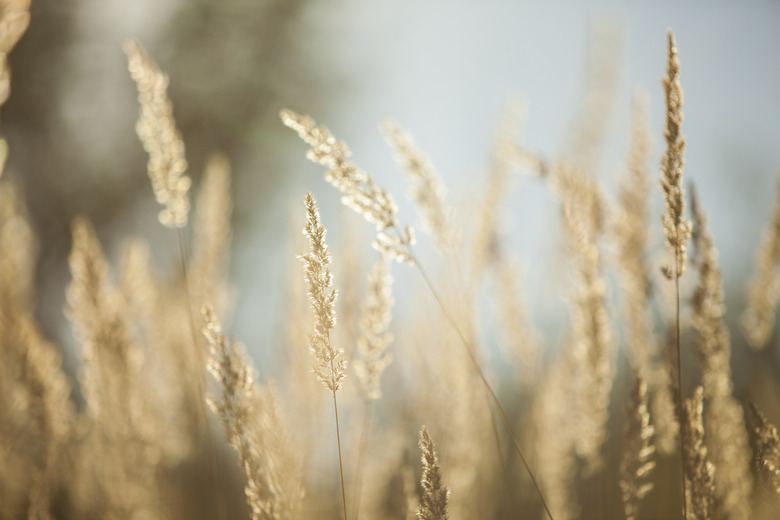Annual Vs. Perennial Rye Grass
Annual ryegrass (Lolium multiflorum) and perennial ryegrass (Lolium perenne) share many characteristics, but their adaptations give them different roles in yards. Unlike its perennial counterpart, annual ryegrass lasts for only one growing season, making it less valuable as the main attraction in a lawn. Perennial ryegrass is a cool-season grass adapted to grow during spring and fall where it is hardy, U.S. Department of Agriculture plant hardiness zones 3 through 9.
Qualities of Perennial Ryegrass
Open lawns that receive direct sunlight provide fertile growing areas for perennial ryegrass, although it can tolerate partial shade. This species is well-adapted to areas with a lot of foot traffic because of its high tolerance for wear compared to other cool-season grasses. Perennial ryegrass is not adapted to grow in hot weather or drought conditions and often lies dormant during summer, but it has excellent cold tolerance compared to annual ryegrass.
Characteristics of Annual Ryegrass
Annual ryegrass and perennial ryegrass germinate rapidly after they are seeded. Both species can take over a lawn if they are seeded at the same time as a less competitive species of grass, but annual ryegrass dies at the beginning of summer, making room for other grasses to grow. Excessively cold or hot temperatures are fatal to annual ryegrass, and it grows poorly in areas of deep shade and during periods of dry weather. Annual ryegrass is adapted to wet or well-drained soil and requires significant amounts of water to thrive.
Uses of Ryegrass
The short lifespan of annual ryegrass makes it useful in situations where its temporary flush of growth is desirable. This species of ryegrass temporarily stabilizes the soil in gardens during winter and in construction areas where bare soil is vulnerable to erosion. Spreading annual or perennial ryegrass seeds in a lawn dominated by a warm-season grass results in a greener lawn during cool weather when warm-season species turn brown and lie dormant. Perennial ryegrass serves as the dominant species in many lawns because it does not die back and regrows from seeds annually.
Ryegrass Adaptations
Perennial and annual ryegrasses are bunching grasses. These plants grow in clumps from a single root system but do not develop stolons or rhizomes, unlike many grass species. Stolons and rhizomes are stems that spread above or below ground from the parent plant before developing a new set of leaves and roots. In lawns where ryegrass is not well-adapted to grow, its bunching habit can result in clumpy growth with obvious bare patches. Additional seeding is needed to fill bare patches with ryegrass because it will not grow into bare spots unless it can develop and spread seeds.
